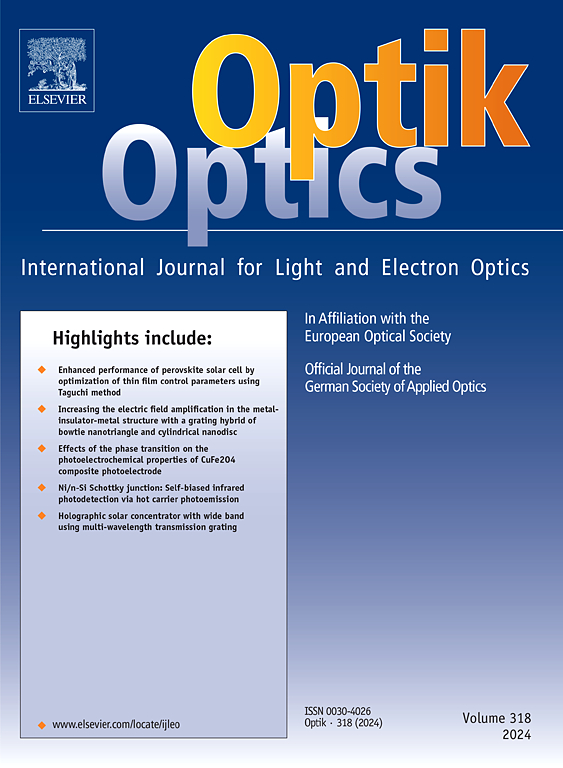在掺铒光纤激光器中实现q开关和锁模的铜铝氧化物
IF 3.1
3区 物理与天体物理
Q2 Engineering
引用次数: 0
摘要
本研究实验证明了铜铝氧化物(CuAlO₂)作为可饱和吸收剂(SA)在掺铒光纤激光器(EDFL)腔中产生调q和超快锁模脉冲。SA是通过将导电氧化物嵌入聚合物基质中形成复合膜来制造的,然后将复合膜集成到两个不同的脉冲产生装置中。在调q配置中,通过调制腔的损耗和增益,泵浦功率范围从132.15 mW到210.62 mW,实现了稳定的运行。重复频率从66.09 kHz增加到84.96 kHz,脉冲宽度从6.31 μs减少到5.03 μs。该激光器的中心波长为1563.3 nm,最大脉冲能量为43.55 nJ,斜率效率为1.95 %。在锁模方面,在空腔中包含一个100 m的光纤线轴,可以实现自启动锁模操作,在泵功率范围为141.38 mW至233.7 mW的范围内持续运行。在141.38 mW时,锁模EDFL产生了以1560 nm为中心的脉冲,重复频率为1.792 MHz,脉冲持续时间为3.17 ps。这些发现验证了CuAlO₂在光纤激光器应用中作为脉冲换能器的适用性。本文章由计算机程序翻译,如有差异,请以英文原文为准。
Copper Aluminum Oxide for enabling Q-switching and mode-locking in erbium-doped fiber lasers
This study experimentally demonstrates Copper Aluminum Oxide (CuAlO₂) as a saturable absorber (SA) for both Q-switched and ultrafast mode-locked pulse generation in an erbium-doped fiber laser (EDFL) cavity. The SA was fabricated by embedding the conductive oxide in a polymer matrix to form a composite film, which was then integrated into two distinct pulse-generation setups. In the Q-switched configuration, stable operation was achieved by modulating the cavity's loss and gain, with pump powers ranging from 132.15 mW to 210.62 mW. The repetition rate increased from 66.09 kHz to 84.96 kHz, while the pulse width decreased from 6.31 μs to 5.03 μs. The laser operated at a central wavelength of 1563.3 nm, delivering a maximum pulse energy of 43.55 nJ and a slope efficiency of 1.95 %. For mode-locking, the inclusion of a 100 m fiber spool in the cavity enabled self-starting mode-locked operation, sustained over a pump power range of 141.38 mW to 233.7 mW. At 141.38 mW, the mode-locked EDFL produced pulses centered at 1560 nm, with a repetition rate of 1.792 MHz and a pulse duration of 3.17 ps. These findings validate the suitability of CuAlO₂ for use as a pulse transducer in fiber laser applications.
求助全文
通过发布文献求助,成功后即可免费获取论文全文。
去求助
来源期刊

Optik
物理-光学
CiteScore
6.90
自引率
12.90%
发文量
1471
审稿时长
46 days
期刊介绍:
Optik publishes articles on all subjects related to light and electron optics and offers a survey on the state of research and technical development within the following fields:
Optics:
-Optics design, geometrical and beam optics, wave optics-
Optical and micro-optical components, diffractive optics, devices and systems-
Photoelectric and optoelectronic devices-
Optical properties of materials, nonlinear optics, wave propagation and transmission in homogeneous and inhomogeneous materials-
Information optics, image formation and processing, holographic techniques, microscopes and spectrometer techniques, and image analysis-
Optical testing and measuring techniques-
Optical communication and computing-
Physiological optics-
As well as other related topics.
 求助内容:
求助内容: 应助结果提醒方式:
应助结果提醒方式:


